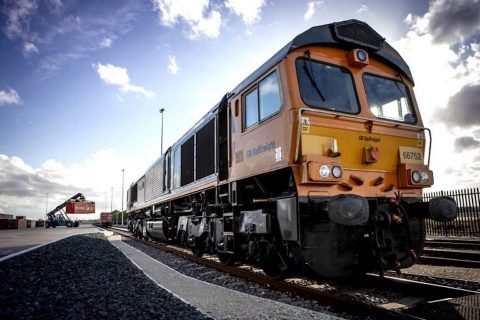Part of UK West Coast Carstairs junction re-opens today

Routing your intermodal? Scheduling your block train? Take note of the first phase of work to upgrade Carstairs Junction as the critical project’s initial stage nears completion. Following a 16-day closure of the West Coast Main Line, phase two of the programme means a partial re-opening today, Monday 20 March. This will allow some trains to run directly from the WCML to Edinburgh, and via diversion routes to Glasgow on weekdays.
The work at Carstairs is part of a 164 million pound (190 million euro) Scottish Government investment to modernise this key junction for passenger and freight services on one of Scotland’s two cross-border routes. The three-month programme will see trains diverted and journey-times extended on services between Glasgow/Edinburgh and Carlisle until June of this year.
If you build it they will come
Engineers at Carstairs are working around the clock to simplify and upgrade the track-layout to clear an existing bottleneck on the national network, that has implications for traffic capacity from the far north to the deep south of Great Britain. It should make the WCML more reliable and better able to cope with increasing passenger and freight demands.
Already there are operators queueing up to use the increased capacity. Among them, the Scottish Government is keen to see much more cross-border freight moved by rail; express logistics operators want to move their time-dependent parcels traffic by rail, and at some point, HS2, Britain’s high speed rail project, wants in on the act too, with their Anglo-Scottish services.
“During the first sixteen days of the work, the focus was primarily on completing the south junction”, say Network Rail. “Installing and upgrading the track, signalling and overhead line equipment to enable passenger and freight services to connect to Edinburgh and to add an additional diversionary route for services to Glasgow (by way of a detour around Edinburgh’s suburbs).”
Reached end of operational lifespan
Work on this strategically important junction is complex and challenging, say Network Rail. A whole catalogue of day and night passenger operators, and the full spectrum of freight movers, are operating via diversionary routes or offering alternative journey options at present.
Keen observers have noted that in addition to the East Coast Main Line, which is almost as busy as the WCML, a diversionary line exists south from Glasgow, via Kilmarnock and Dumfries, rejoining the WCML at Carlisle. Campaigners also stress that the dismantled “Waverley Route”, a direct alignment between Edinburgh and Carlisle, would alleviate much of the congestion currently experienced, and provide a robust alternative for network operations.
Timeframe
“Although the weather has been challenging, work has been progressing well”, said Jim McCleary, Network Rail programme manager for the Carstairs Junction project. “We have delivered new track, signalling and overhead lines all across the junction. Work in the southern section enables the new layout to re-open and from Monday (20 March 20 passenger and freight services will begin to again run to Edinburgh and will also enable an alternative diversionary route for services to Glasgow.”
The next stage of work focuses on the West Coast Main Line section of the new layout, building it to be more resilient and reliable with the aim of reopening in late April, say Network Rail. Carstairs Junction sits 26 miles (42 km) to the south-east of Glasgow. Much of the infrastructure through the area is reaching the end of its operational lifespan, often requiring speed restrictions to be imposed. Network Rail say the layout of the junction is no longer suited to today’s pattern and volumes of service with over 200 services crossing the junction on an average midweek day.




